The Brazilian Farroupilha–What Is It Really?
The most literal translation of the word Farroupilha, according to Google Translate and every other source I’ve consulted, is “Ragamuffin.” The word is based on the Portuguese farropa, or “rag,” with the diminutive suffix ilha, the feminine form of ilho. In Brazil, the word Farroupilha can refer to a city of roughly 70,000 people in Brazil’s southernmost state of Rio Grande do Sul or a neighborhood in Porto Alegre, that state’s capital and largest city. For most, though, it refers to a group of Brazilian gauchos (think white land-owning rancher/cowboys) during Brazil’s imperial period, and the republican revolution they started, a revolution that is still celebrated with a weeklong annual Farroupilha festival in Porto Alegre.
Since the word Farroupilha can refer to so many different things in Brazil, and since very little if any English-language information on the sandwich appears online, and since my Portuguese is nonexistent, researching this sandwich presents some difficulties. Google search results are almost universally about the town or the neighborhood, the cowboys, their festival, or the war it celebrates–a war that ended with the Farroupilha gauchos returning to the fold of the Brazilian empire and executing the black soldiers who fought for secession at their sides.
Let us then start with the definition of the sandwich that is given to us by the anonymous benefactor who added this sandwich to Wikipedia’s List of Sandwiches. “Mortadella slices and cheese, into a French bread with butter inside, usually served split in two halves and paired with coffee or soda.”
Searches for Brazilian mortadella sandwiches turn up much more relevant results. The Wikipedia page on mortadella sandwiches, in fact, states that mortadella sandwiches are very popular in São Paulo, as does the page on mortadella. Google Image Search results abound, almost universally showing a great pile of mortadella, with a melted white cheese oozing out from inbetween its slices, cut in half as per the sandwich definition.
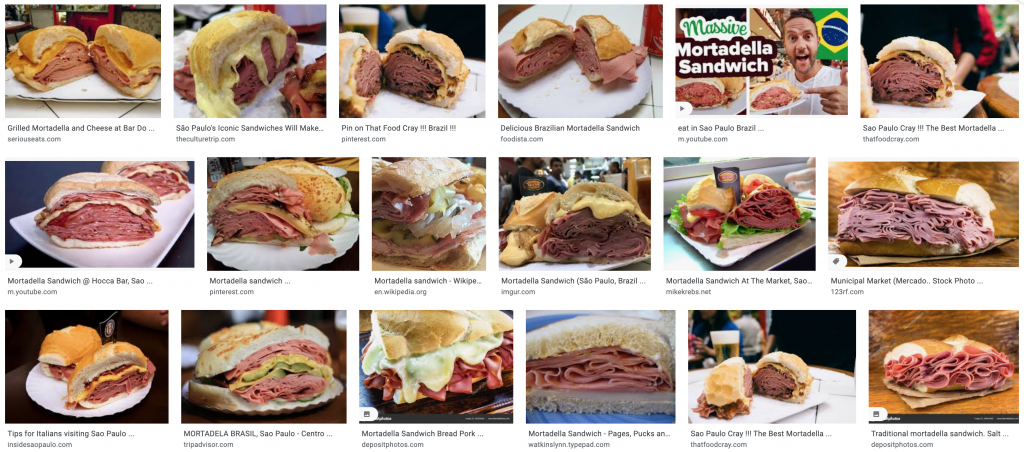
The most-often referenced sandwich is served by a stand in São Paulo’s large municipal market called Bar do Mané, where Anthony Bourdain once tried one of these massive piles of meat and cheese in an episode of The Layover and declared it a “Matterhorn of meaty goodness” and “<expletive deleted> delicious.”
And yes, I started out this month thinking this sandwich would be a quick win. I made a batch of pão francês, the Brazilian “French rolls” that these sandwiches generally employ.
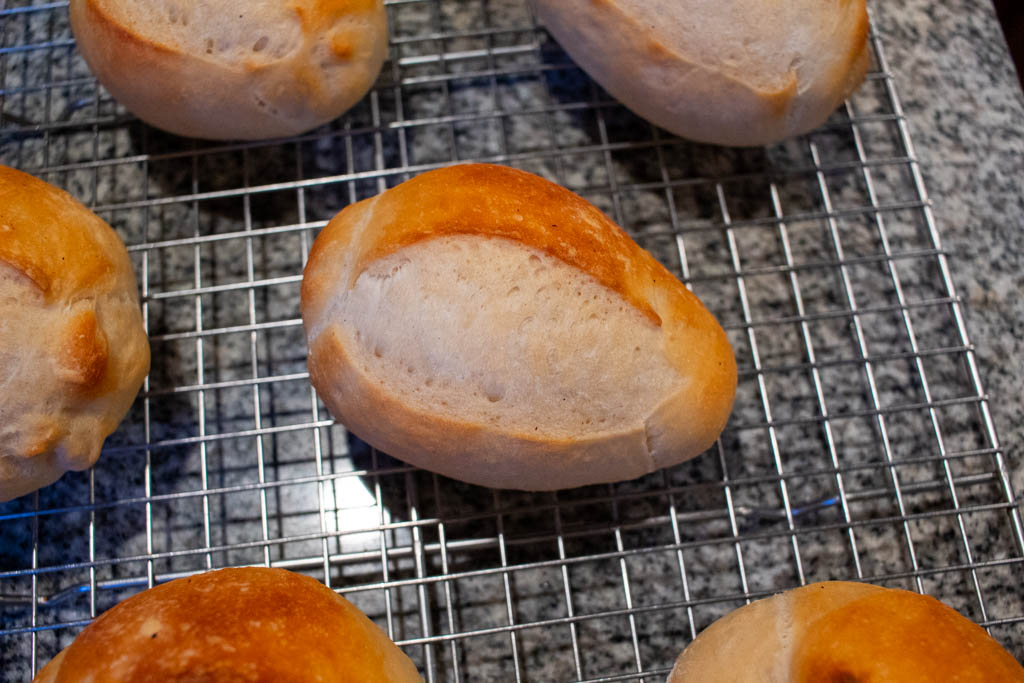
I bought some mortadella, and some provolone, which is generally the cheese referenced when talking about this sandwich. I even bought some ham, since I’d found worrying reports that the Farroupilha contained ham instead of mortadella and I wanted to cover my bases. I made a gooey, slightly-less-overloaded-than-Bar-do-Mané’s-version fried mortadella and cheese sandwich and it was delicious.






I made it again, only this time I added Dijon mustard per another description I’d found.



I made it again, but used ham this time, to cover my bases. I even made a version with turkey (not pictured, and mostly as an accident. It was surprisingly great though).



The problem with all this, of course, is that São Paulo’s mortadella sandwich isn’t really the same thing as the Farroupilha. Is it a good sandwich? Yes, it’s delicious. Am I glad I tried it? Of course! When I wrote about mortadella sandwiches a few years ago, I completely disregarded this Brazilian behemoth, and it deserves a spot in our pantheon. But not once in any of the videos or articles I found is this sandwich called a Farroupilha. Farroupilha sandwich mentions on restaurant menus from what I can tell seem to cluster around Porto Alegre, the capital of Rio Grande do Sul, a thousand miles south of São Paulo. Even if the two sandwiches are exactly identical, I am not covering the Farroupilha when I write about São Paulo’s sandwich.
So I turned again to the internet and did a deeper dive in trying to find the sandwich. This time, I searched social media sites like Twitter and Instagram to try and get a better idea. Unfortunately, people on Twitter, Instagram and the like often write as if their audiences share the same assumptions they do. In a tweet, one barely has enough space to make a point, much less define each term one is using, and other social media statuses are often similarly pithy. Individual posts do not shed much light on the situation.
This tweet–the most recent to mention a sanduiche Farroupilha at the time of this writing, from about 1 month ago–describes its author’s excitement to see a sandwich called Farroupilha on the menu in the city Poá, in the state of São Paulo. He orders it, only to discover it consists of ham and cheese on French bread, and punctuates this revelation with 2 expressionless emojis. In a reply to the tweet, he called it the greatest culinary disappointment of his life. Was it missing butter? Did he expect mortadella instead? Or was he merely disappointed that a sandwich with such an interesting-sounding name turned out to be so ordinary? I contemplated tweeting at him to ask. I even ran my question through the Google translator. Ultimately I decided to keep searching, and quickly found the following.
Here is a Farroupilha sandwich from a pastry shop in Poá called Jean Pierre. It appears to be a French roll containing ham and cheese. Is this perhaps the version the previous tweeter found so disappointing? It looks fine to me, and the coffee looks great. In fact, the sandwich looks quite a bit like what we made previously, though perhaps not as hot and melty.
Here is a “salad” version of the sandwich–referring to the addition of lettuce and tomato, one assumes–served by a luncheonette in Passo Fundo, a city in Rio Grande do Sul, where the Farroupilha is well known. The check mark next to “CAFE DA MANHA” indicates that it is served for breakfast. The meat appears to be salami or some other type of charcuterie.
This tweet consists of a man quote-tweeting himself. In the original tweet, he complained about a visiting a chocolate shop and asking for, in turn, a Brazilian cheesy bread roll called pão de queijo, a Farroupilha sandwich, and coffee. The chocolate shop, perhaps unsurprisingly, served none of the above. His comment in the quote-tweet defines the Farroupilha sandwich for those who are not familiar–apparently it is a little-known quantity even in Brazil. He expains that it consists of a French bread roll (the local slang for which, cacetinho or “cock,” he acknowledges to be laughable), butter, ham, and cheese. This man is a journalist, also based in Porto Alegre. The closer we get to the source, the more confusing this sandwich gets.
I think I may have cracked the code, though.
To translate, the original tweet by @essediafollouco states that sliced bread + cheese + ham has these various names in areas of Brazil: in District Federal it’s called misto-quente (mixed hot); in Rio de Janeiro it’s called mixto (mixed); in the state of Parana it’s called bauru, a sandwich name we’ve seen before on the Tribunal; in the state of Rio Grande do Sul it’s called torrada cacetinha (French bread toast); and in São Paulo it’s called bolacha (wafer or cookie). It then asks what the local word for this type of sandwich is in the reader’s area. The reply tweet by @robertoevaldt clarifies that in Rio Grande do Sul, a sandwich of sliced bread is called a torrada or toast, but a sandwich on French bread or cacetinho is called Farroupilha.
This, I believe, brings me the closest I’ve come to understanding the term. And I find it fascinating to see the same kind of linguistic confusion around the definition of a sandwich that we see in English–A hot dog isn’t a sandwich! Well if a sub is a sandwich then so is a hot dog! What do you mean, calling this po’boy a sub? This is a hero, not a hoagie! That’s not a grinder, it’s a spuckie! etc., etc., etc.–play out in an entirely different language. The original tweet has hundreds of replies and while many of them claim misto, mixto, or bauru as their local term, there are a number of unique regional variants as well. Tostex. (Toastie?) Biscoito. (Biscuit) Trem. (Train) It’s Twitter, so not everybody may be entirely sincere, but it’s clear that English doesn’t have a monopoly on hyper-local sandwich chauvinism.
If this evidence is to be believed, Farroupilha is a kind of generic word for sandwiches using a specific kind of Brazilian bread roll–again, like the words sub or hoagie or grinder are used in various parts of the United States. This term appears to be used primarily in Brazil’s southernmost state, Rio Grande do Sul, and the actual ingredients that go into a Farroupilha–while often consisting of mortadella or ham with cheese and butter–appear to be at least somewhat fungible. Some of the examples I’ve found contain requeijão, a kind of creamy cheese spread common to Brazil, in place of the butter. Some contain salad in the form of lettuce and tomatoes, mostly. Sometimes they are sold natural, with just the residual heat of the freshly baked bread to warm up the meat and cheese and butter, but sometimes they are sold prensado, or pressed, like a panini.
It looks like I’ll need to make some more pão francês.
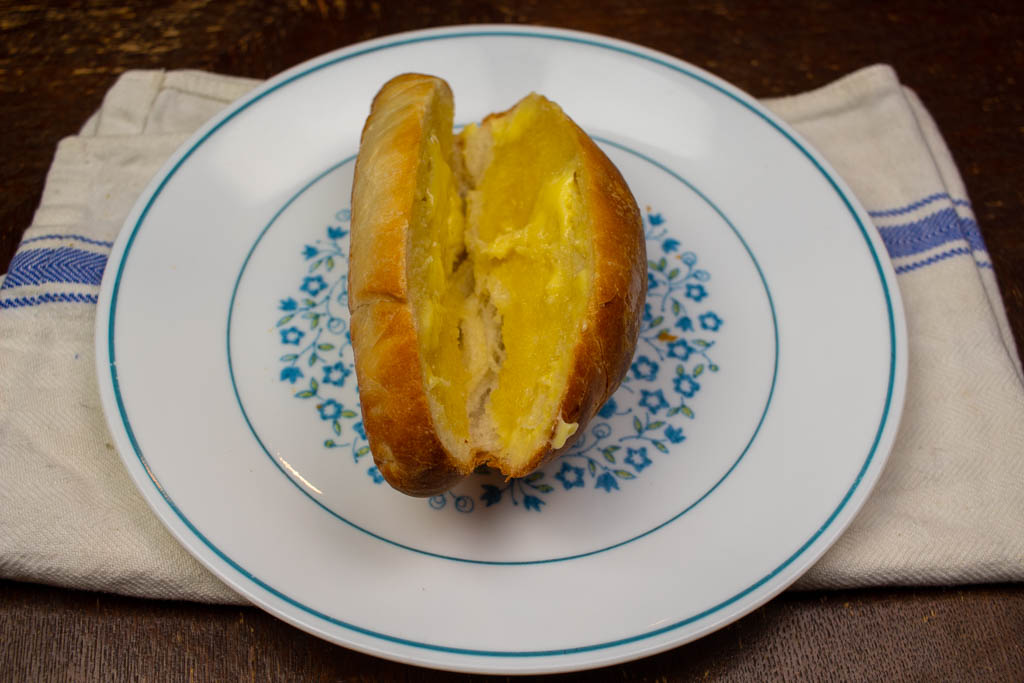
We take a nice crusty pão francês roll, still warm from the oven, cut it almost all the way open, leaving a hinge on one side, and spread butter on the interior. If the rolls have cooled off, we can put one back into a 350° F oven for 5 minutes to warm it back up and revive that nice crisp exterior.

Into the roll, we place two slices of mortadella and a slice of provolone cheese, folded in half.
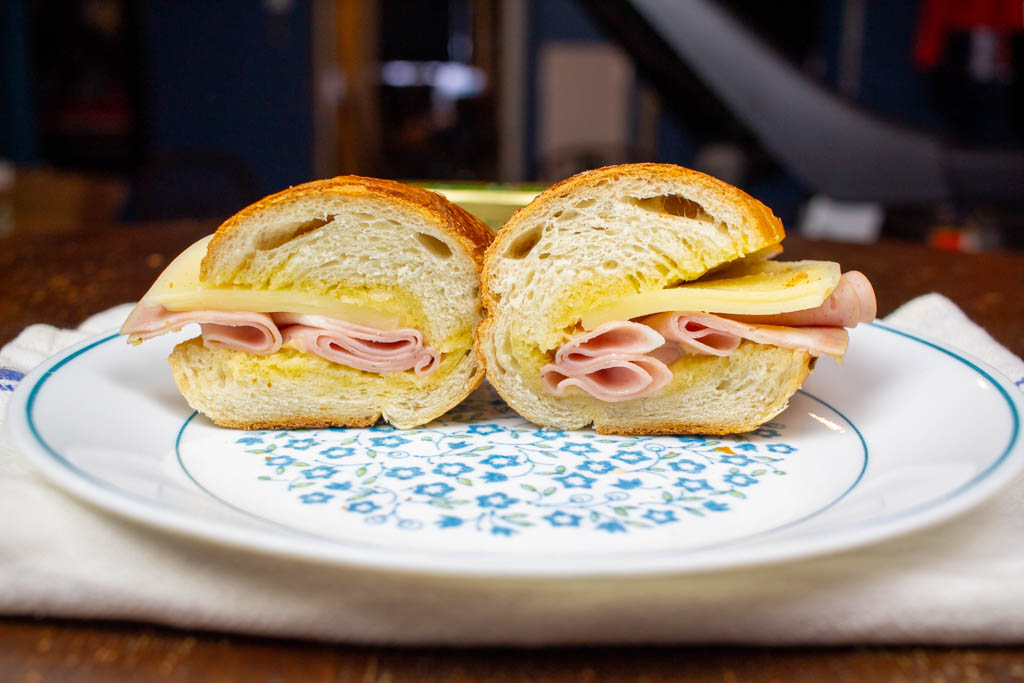
Then we cut the sandwich in half before serving it. This is a Farroupilha, as far as I can tell. It’s as simple as one of these sandwiches can get, and as long as you like the flavors of mortadella and provolone, it’s a good sandwich. Provolone in the Americas is a mild cheese, well suited for sandwiches, and here it allows the aromatic qualities of the mortadella to lead–nutmeg, coriander, black pepper, warming spices. The butter, melting into the warmed bread roll, keeps the sandwich from being too dry, though mortadella itself needs little assistance in that area.

If we take that same roll, spread it with requeijão instead, add two slices of mortadella, one slice of provolone, tomato and leaf lettuce–this too is a Farroupilha.

Requeijão is not a common item in the US. There are more than a few recipes you can find online for making a similar product. However, a throw-away comment in this recipe post–“from now on you won’t have to go to a Brazilian or Middle-Eastern market in order to buy this amazing Brazilian cream cheese spread”–helped me recall that I’d seen similar products with Arabic labels at some of the markets I frequent.

How similar are they? I can’t say, never having tried the Brazilian version. Like the descriptions I’ve read of the Brazilian product, it is a cream cheese spread that bears little resemblance to what we in the US would call cream cheese. Regardless, this makes a good sandwich condiment, with a spreadable texture similar to a softened butter and a slightly sour, milky flavor that doesn’t work quite as well with the tomato and lettuce as I’d hoped–mayonnaise would be even better, but this is tasty enough.

If we take a cacetinho roll, put mortadella and cheese inside it, butter the outside ever so slightly, then toast it in a panini press? This, it appears, would also be a Farroupilha.
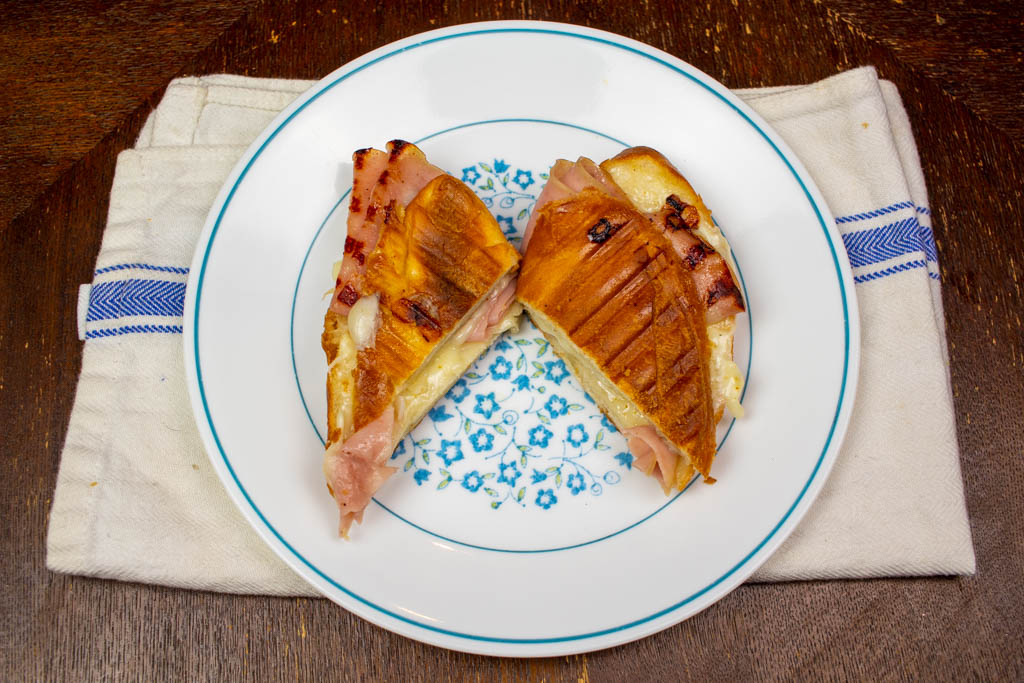
Like many bread rolls–as opposed to sliced bread–the pão francês doesn’t work particularly well in the panini press to my mind. The top part has a tendency to wander away from the bottom part, and the crustier the roll, the worse that tendency gets. Otherwise, mortadella and provolone make for an ideal melt, as I’ve observed previously.
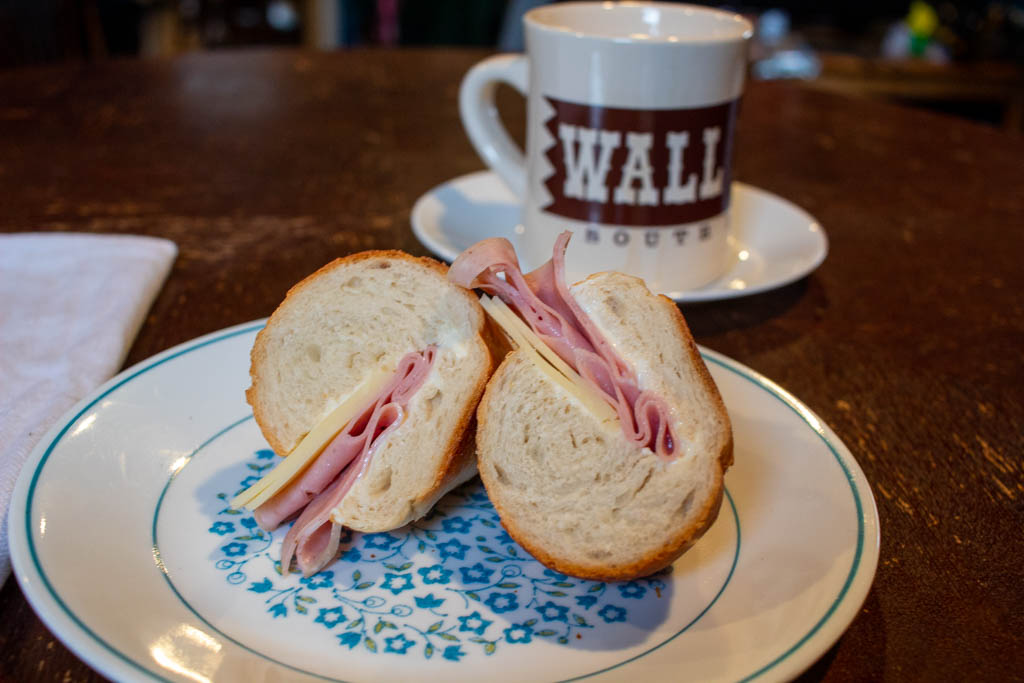
When it comes to this sandwich, though, simplicity is best, and I find myself returning to the version as described in the Wikipedia List of Sandwiches (though replacing the butter with requeijão)–“served split in two halves and paired with coffee.”
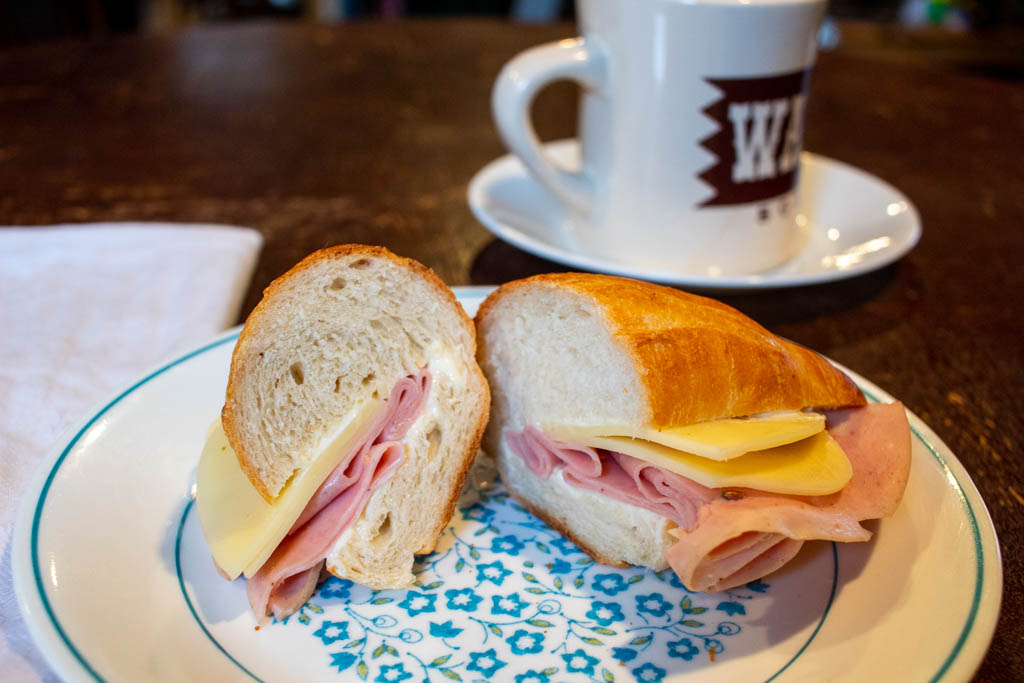
It’s the best one I’ve tried, even if the two halves don’t want to sit nicely for their closeup. Requeijão may not work as nicely as mayonnaise when dressing a sandwich with lettuce and tomato in it, but it’s at least as good as butter when providing a lubricating factor in a meat-and-cheese-only affair.
So this is the Farroupilha–I hope. Maybe there is a Brazilian reader out there who can help set me straight if I’ve gotten it wrong. It wouldn’t be the first time.

I like sandwiches.
I like a lot of other things too but sandwiches are pretty great


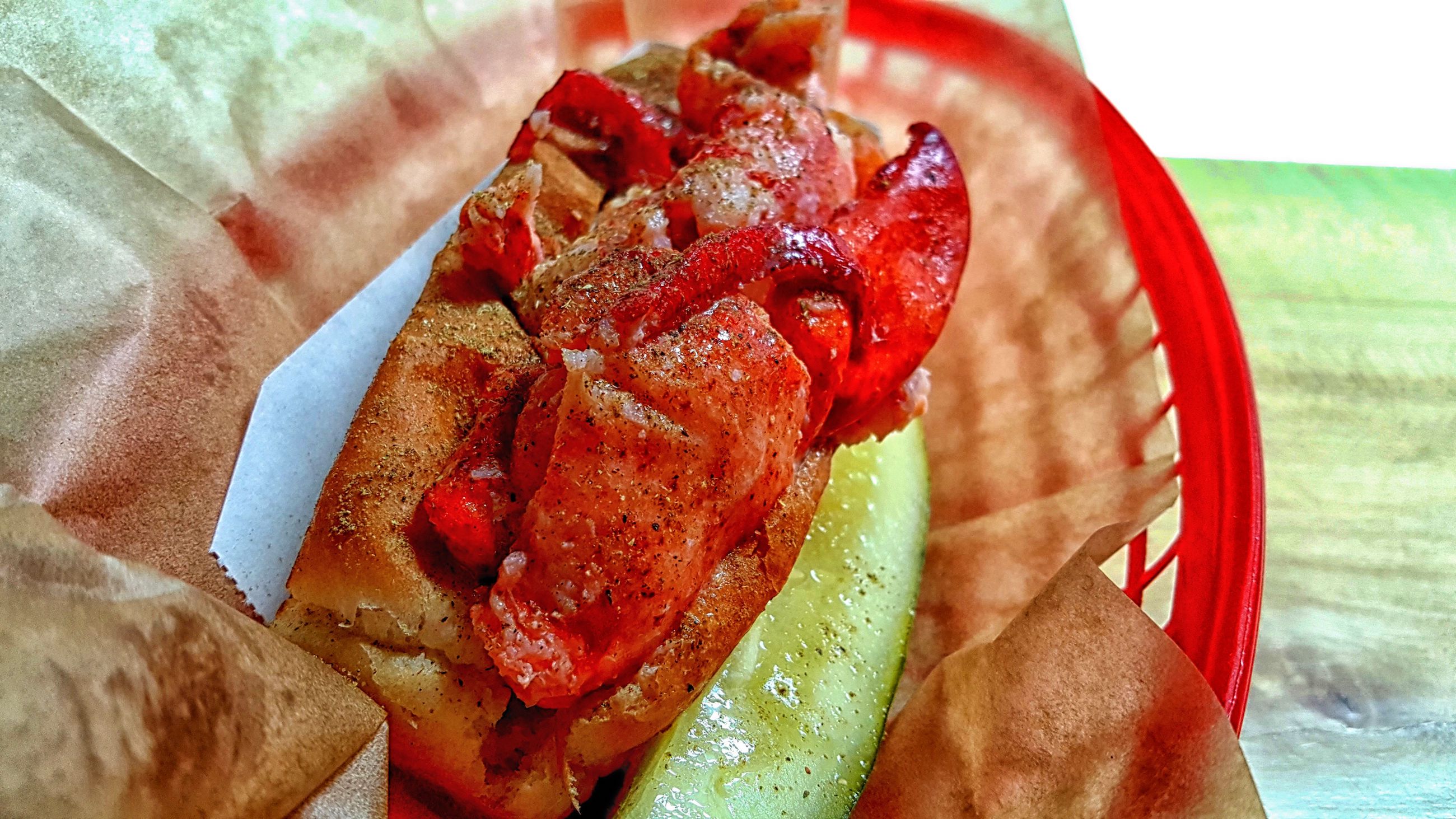

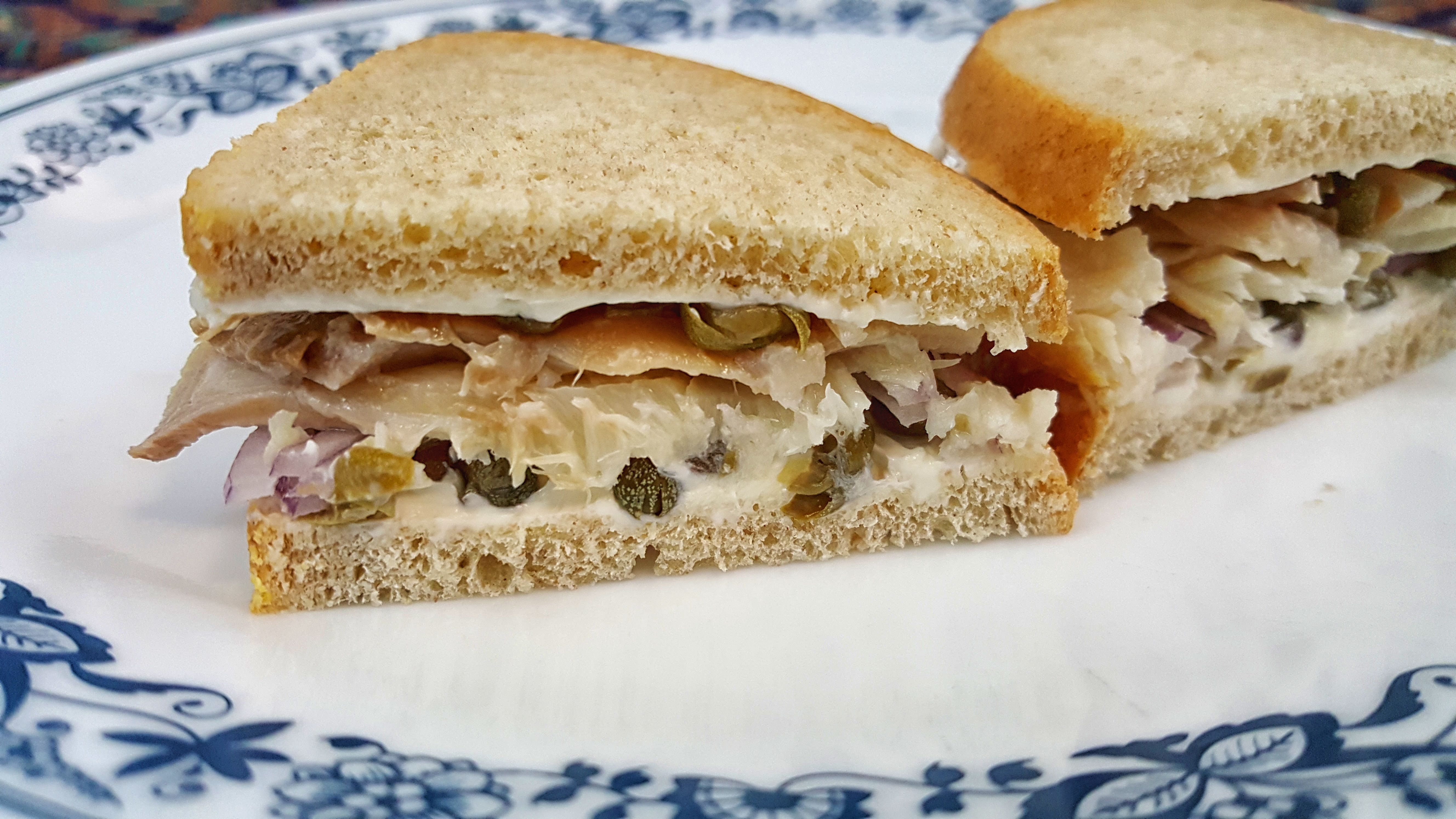
Poa in this context is actually an “acronym” people (mostly in Southern Brazil) use to refer to Porto Alegre, capital city of the Rio Grande do Sul state – where the term farroupilha is used =)
Coincidentally, there is Poá, the city in São Paulo state, but they are not related in any form.
Thank you for clarifying! That kind of context is difficult to pick up without local knowledge so I really do appreciate this comment!